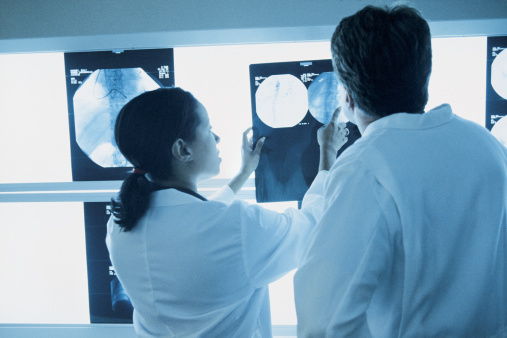

As a radiologist you will lead a healthcare team focusing on the diagnosis and treatment of diseases and injuries using imaging technology. Some radiologists will focus on specific imaging technology (e.g. CT or MRI) while others may focus on specific body areas (e.g. musculoskeletal or neuroradiology). There are also opportunities to practice in specialty areas such as interventional radiology, breast imaging, or cardiovascular imaging while others will focus general radiology.
Most travel opportunities will be based in the hospital or with a freestanding imaging group. The greatest need for temporary practice in radiology is in small to medium size communities. Practices require temporary coverage for multiple reasons such as:
Temporary positions allow you to “interview” a practice and find out if the practice and community are a good fit for you. Alternatively, short-term work assignments allow you the freedom to fulfill your other life needs like travel, scaling back, or participation various other activities. The main benefit of temporary work is that you control your own schedule.
Outstanding clinical knowledge, effective communication and problem solving skills are basic entry-level requirements to successfully perform as a radiologist.
Radiology is an emerging, technology driven field and you must not only have the academic curiosity to acquire new expertise and skills as it develops, but also be able to adapt to a rapidly changing field.
Radiology demands effective communication skills to deliver information to treating providers as well as explaining procedures and risks to patients.
Radiologists are the leaders of the imaging team. You will need to not only interact with other professional and ancillary staff to effectively deliver the best care, but also monitor and perform quality improvement for your area. As imaging grows, you will need to interact with more parts of the hospital and provide service to a larger group of constituents. If you do not play well in the sandbox with others your patients and department will suffer.
In order to become a radiologist you must first complete:
Every state in the U.S. requires licensure for the practice of medicine. In general licensure requires you must:
While not a requirement for licensure, many hospitals want physicians on their staff to obtain board certification in their specialty. In radiology you must pass both written and oral exams that indicate you have met minimum necessary standards in the field.
The median full time salary (where exactly half of salaries are above and half below) for a radiologist is $374,995 according to Salary.com. Hourly or daily compensation is also available in some temporary positions. Hourly compensation ranges from $155- $209 per hour. Daily rates will depend on hours worked and studies interpreted, but the following are reasonable expectations:
You can expect more for weekend/ holiday work. Various other needs will impact salary – how easy or difficult it is to recruit to a particular place with rural and less attractive places generally paying more.
Compared to other specialties, radiologists have minimal patient contact and nearly all of their work is performed in a hospital or imaging center. Despite this, most radiologists are happy with their levels of contact despite its transient nature. On the other hand, radiologists are always interacting with consultant services and significantly impact care patients receive.


Centers that are expanding services will often look to traveling radiologists to meet their needs before hiring a permanent position. Such thriving practices can be intellectually and professionally stimulating places to work. As a plus, you may be offered a permanent position as the business gets busier.
Travel can be a great way to find either your ‘first’ or ‘next’ job. Temporary positions give you the outlook and understanding you will not get in an interview. You will know what it is like to practice in that environment, what your colleagues are like, and the weaknesses of your practice and community. Additionally, in travel medicine the recruiting company or the hospital you will work for will take care of many of the problems you may not want to deal with like accommodation, travel plans, malpractice insurance, and hospital credentialing.
Finally, short-term jobs provide added educational opportunities. You will see regional variations in radiology practice and how similar clinical and administrative tasks are handled across different practice settings. Such experiences will enhance your skill set for administrative and other leadership positions in the future.
By Pat F. Bass III, M.D., M.S., M.P.H.
Pat Bass
Pat is a board certified General Internist and Pediatrician He has served as a reviewer for leading national publications including Pediatrics, the Journal of General Internal Medicine and the Annals of Internal Medicine. Pat is also the asthma guide to About.com, a New York Times Company. Learn more about Pat on Google+